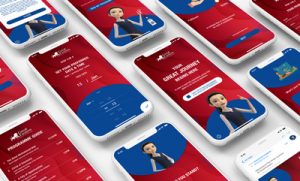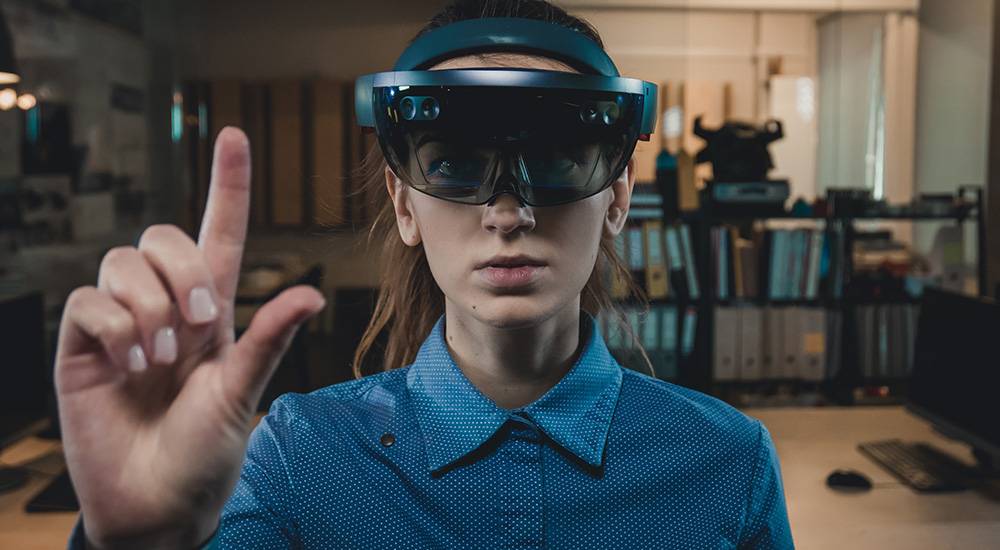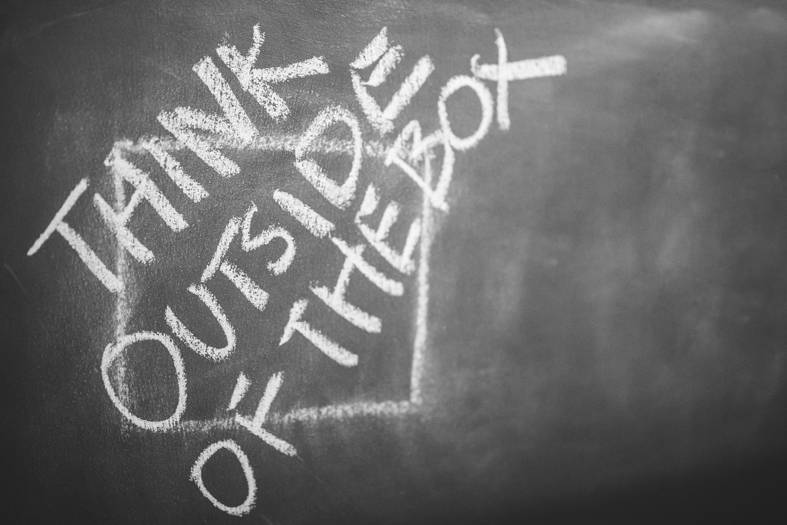Professor Klaus Schwab, Founder and Executive Chairman of the World Economic Forum, introduced the idea of “The Fourth Industrial Revolution” in his book of the same name in 2016. The term sounds about right as this era is characterised by accelerated technological advancements, each one more groundbreaking than the last, that have the potential to disrupt businesses.
Listed among the top emerging technologies to watch by a Forrester report, Augmented Reality (AR) and Virtual Reality (VR) content saw its global consumer spending grow steadily. As this trend is expected to continue in the next few years, marketers are starting to realise the need to harness such experiential technologies to achieve business goals. In fact, business-to-business (B2B) brand-side marketers are using them more and more to connect with their customers, especially as they anticipate an average growth of 24 percent in experiential budgets.
So, what exactly are experiential technologies and why are brands shifting their budgets to leverage on them?
What is Experiential Technology?
Experiential technology is any type of innovation which interacts with a consumer to improve the user experience. It is most commonly used in experiential marketing campaigns which aim to create opportunities for consumers to experience a brand in person.
According to a research study by Agency EA, an established expert on brand experience, one in three brand-side marketers rank experiential and event marketing as the number one most successful marketing tactic. In 2019, Bizzabo also reported that 41 percent of marketers believe events are the single-most effective marketing channel over digital advertising, email marketing and content marketing. With brands recognising the importance of experiential marketing in their efforts to enhance consumer engagement, experiential technologies now play a crucial role in the development of unique and memorable experiences for their target audiences.
Here are 5 ways experiential technologies can help to increase the return on marketing investment (ROMI) for businesses:
1) Gain Brand Exposure
A big part about being acknowledged as a successful brand is the ability to reach out to consumers across multiple platforms and using experiential technology at live events is a great way to do just that. Brand-side marketers think so too as 62 percent of them are using experiential marketing to drive both brand awareness and lead generation.
An experiential marketing event is a good chance for your customers to learn more about your brand, especially what sets it apart from your competitors.
Everyone loves a novelty and having an interesting technological set up can help to draw a curious crowd to your event. Through digital games and other activities that can be incorporated with the technology, you can educate your customers on your brand identity.
You may also consider the use of social media to generate additional buzz and ignite excitement for your event. For example, you can encourage participants to like your official social media pages after interacting with the experiential technologies at the event and share their experiences or any photos they may have taken. Be sure to come up with a suitable hashtag that they can use, to ensure that your brand messaging reaches the right online audience. You can even offer attractive gifts to your event attendees in return for spreading the word about your event. The power of sharing cannot be understated when 98 percent of consumers create digital or social content at events and experiences, and 100 percent of these consumers share the content.
By adopting experiential technologies to stir the interest of the general public as well as a combination of online and offline marketing, you can increase the omni-channel visibility for your brand.
2) Raise Sales & Boost Brand Loyalty
The Principle of Reciprocity, which describes the human need to want to give something back after something is received, explains why consumers are more likely to make a purchase after being a part of a rewarding experience. Using experiential technologies, you can let your intended market know what your brand stands for and give consumers the opportunity to sample your product at your event. This can result in higher sales as your customers will be more willing to buy your product. Even if consumers do not make a purchase right away, they can still receive useful product knowledge that can bring them back to you in the future. For this to happen, experiential technologies and live events are essential as 65 percent of consumers say that live events and product demonstrations helped them fully understand a product better than any commercial or other method could.
However, the bid to build long-term brand loyalty does not end there. While there is no one way to ensure that your customers will keep coming back, experiential marketing is a great place to start as evident from how 92 percent of brand-side marketers believe integrating experiential marketing within the overall sales and marketing funnel is imperative to their success. First, earn the trust of your customers with a fun experience that teaches them about your company values. Once a purchase is made, encourage them to reciprocate with another good act by thanking them for the purchase, perhaps with a small token of appreciation or a follow-up email. By extending another gift or recognition, not only are you setting in motion the cycle of reciprocity, you are also showing a strong commitment to the continuation of your existing relationship with your customers.
Events that implement experiential technologies can thus help to form lasting memories, as they engage all senses of the user to generate a feel-good factor, which boost sales and drive brand loyalty.
3) Immersive and Personalised Experiences
Speaking of memories, nothing leaves an enduring impression on your audience better than distinctive and immersive experiences that offer consumers a personalised touch. Physical experiences such as interactive product displays, game machines, exciting projections and spectacular lighting effects all contribute to a multi-sensory feast that allows customers to see, touch, smell, hear and taste your products or even provide product recommendations based on their likes and preferences. Experiential technologies therefore facilitate authentic experiences that traditional advertising like email, direct mail and commercials simply cannot replicate.
Experiential technologies also enables face-to-face interactions with your customers, something that millennials especially value. 77% say some of their best memories are from an event or live experience they attended or participated in and 69% believe attending live events and experiences make them more connected to other people, the community, and the world. It is hence imperative that brands look to experiential technologies to design a brand experience that is able to deliver more compelling engagement.
New technologies like artificial intelligence and voice-recognition can help to bring the sensory experience to another level with interface-free interactions, further closing the distance between your brand and your customers.
4) Data Collection
Data collection can begin even before you kickstart your experiential event. As customers sign up for the experience, you may send out an Electronic Direct Mail (EDM) to invite your customers to share more details about themselves, for instance their particulars, down to their favourite drink. By collecting data online prior to the event, you will be able to personalise the offline experience for your customers in a comprehensive online-to-offline (O2O) framework.
Once your customers are at the event, experiential technologies can aid you in your data collection efforts. Interactive vending machines for example, can capture the purchasing behaviour of consumers in real-time. Likewise, display technology can do more than just present a video. It also allows you to track user responses to gather consumer data. While the effectiveness of artificial intelligence (AI) as a data collection tool still remains to be seen, AI has demonstrated the capacity to possibly take all the work out of surveyors in due time.
With more than 80% of marketers gaining valuable insights from data collected at events, it is no wonder that others are gradually looking to experiential technologies to find out which products appeal to their key audience the most as well as where and how their customers prefer to be engaged. Gone are the days when event-goers have to fill in tedious survey forms with a pen and paper. Instead, participants can communicate their thoughts on the event via post-experience surveys done on digital touch screens. Businesses can then rely on such information as they seek to personalise the follow-up with attendees, understand the impact of the experience on their brand perception and improve the outreach to consumers in future.
5) Eliminate Queues for Your Customers
Besides optimising feedback channels, experiential technologies also help to transform productivity for your business which can lead to the cutting of wait times for your customers. For one, automated retail revolutionises the shopping process by allowing consumers to scan QR codes for product information and make cashless payment. Customers can thus enjoy a seamless checkout that is quick and convenient.
Second, experiential technologies can blur the lines between sales space and experiential environment to give consumers the illusion of shorter wait times. Interactive technologies and queue systems can be integrated such that queue numbers can alternate between digital media content. As the consciousness of customers drift in and out of queuing, their perceived wait times can be significantly reduced.
Since the bulk of the customers’ time at the experiential venue is not occupied with queuing, it becomes the cherry on top of their overall experience with a brand. This in turn evokes positive emotions in the consumers for the brand and fosters brand attachment.
Dare to Dream, Go Experiential
For businesses to stay relevant, they should continuously evolve their marketing methods to add value to consumers’ experience of their brand and meet other business aims at the same time. Experiential technologies enable your brand to gain exposure on multiple channels, generate customer loyalty, immerse your customers in a personalised brand experience, collect data to draw insights and optimise business processes.
In human relationships, it is important to have in-person interactions which can go a long way towards deepening a budding bond and the same applies to business relationships. In fact, 84 percent of leadership (Vice-President and C-Suite) believe in-person events are a critical component of their company’s success. Employing experiential technologies at various touchpoints of your brand event can engage your primary audience on a level that surpasses conventional marketing. When it comes to conceptualising a brand experience, be willing to think out of the box and do not be afraid to be experimental with experiential technologies.








